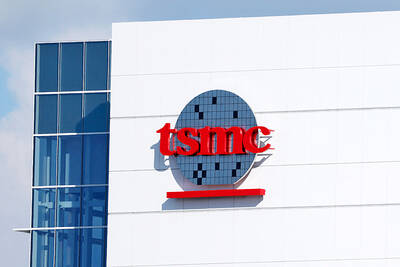Delta Electronics Inc (台達電), the nation’s top supplier of power-supply units, on Friday inaugurated a solar power plant in the mountainous area of Ako City in Japan’s Hyogo Prefecture.
It is the first solar power plant built by Delta as part of its efforts in generating electrictiy from renewable energy sources. The plant, which connects to an extra-high voltage grid of 33,000 volts, is the largest distributed solar power plant in Japan.
Covering an area of 96,000m2, the plant at the Delta Ako Energy Park has a capacity of 4.6 megawatts and is expected to generate 4.9 million kilowatt-hours per year.
Delta said that electricity generated by the plant is expected to meet the energy demands of 930 households per year. Under Japan’s Renewable Energy Special Treatment Act, the power generated by the Delta Ako Energy Park can be entirely sold to power companies there.
NEW MODEL
The presence of the solar power plant has created a new business model and an alternative revenue source for Delta. In addition, it marks a milestone for the company’s commitment to providing clean energy and supporting environmental sustainability.
The company has provided power and energy management solutions to a wide range of global industries, including renewable energy, data centers and industrial automation, vice chairman Mark Ko (柯子興) said.
BOOST TO GROWTH
Meanwhile, doubling the share of solar, wind and other renewables in the energy mix would boost global economic growth by as much as 1.1 percent by 2030, according to the International Renewable Energy Agency (IRENA).
The gains, equal to US$1.3 trillion, would mostly come from increased investment, IRENA said in a report on Saturday. That would boost “direct and indirect” industry employment to 24.4 million people, according to the report. Last year, it estimated sector employment at as many as 9.2 million people.
“Doubling the share of renewables in the global energy mix pays back in terms of economic growth, social welfare, job creation and overall trade balances,” it said in conjunction with its annual meeting in Abu Dhabi.
“This study, the first of its kind, provides a solid basis for future work to quantify the growth-enhancing potential of renewable energy in the global economy,” the report said.
Global energy demand is expected to increase by 21 percent by 2030, the group said, citing International Energy Agency data. The share of the energy sector to gross domestic product is 6 percent, ranging from 57 percent in Kuwait to 3 percent in Germany, it said.

Real estate agent and property developer JSL Construction & Development Co (愛山林) led the average compensation rankings among companies listed on the Taiwan Stock Exchange (TWSE) last year, while contract chipmaker Taiwan Semiconductor Manufacturing Co (TSMC, 台積電) finished 14th. JSL Construction paid its employees total average compensation of NT$4.78 million (US$159,701), down 13.5 percent from a year earlier, but still ahead of the most profitable listed tech giants, including TSMC, TWSE data showed. Last year, the average compensation (which includes salary, overtime, bonuses and allowances) paid by TSMC rose 21.6 percent to reach about NT$3.33 million, lifting its ranking by 10 notches

Popular vape brands such as Geek Bar might get more expensive in the US — if you can find them at all. Shipments of vapes from China to the US ground to a near halt last month from a year ago, official data showed, hit by US President Donald Trump’s tariffs and a crackdown on unauthorized e-cigarettes in the world’s biggest market for smoking alternatives. That includes Geek Bar, a brand of flavored vapes that is not authorized to sell in the US, but which had been widely available due to porous import controls. One retailer, who asked not to be named, because

SEASONAL WEAKNESS: The combined revenue of the top 10 foundries fell 5.4%, but rush orders and China’s subsidies partially offset slowing demand Taiwan Semiconductor Manufacturing Co (TSMC, 台積電) further solidified its dominance in the global wafer foundry business in the first quarter of this year, remaining far ahead of its closest rival, Samsung Electronics Co, TrendForce Corp (集邦科技) said yesterday. TSMC posted US$25.52 billion in sales in the January-to-March period, down 5 percent from the previous quarter, but its market share rose from 67.1 percent the previous quarter to 67.6 percent, TrendForce said in a report. While smartphone-related wafer shipments declined in the first quarter due to seasonal factors, solid demand for artificial intelligence (AI) and high-performance computing (HPC) devices and urgent TV-related orders

MINERAL DIPLOMACY: The Chinese commerce ministry said it approved applications for the export of rare earths in a move that could help ease US-China trade tensions Chinese Vice Premier He Lifeng (何立峰) is today to meet a US delegation for talks in the UK, Beijing announced on Saturday amid a fragile truce in the trade dispute between the two powers. He is to visit the UK from yesterday to Friday at the invitation of the British government, the Chinese Ministry of Foreign Affairs said in a statement. He and US representatives are to cochair the first meeting of the US-China economic and trade consultation mechanism, it said. US President Donald Trump on Friday announced that a new round of trade talks with China would start in London beginning today,